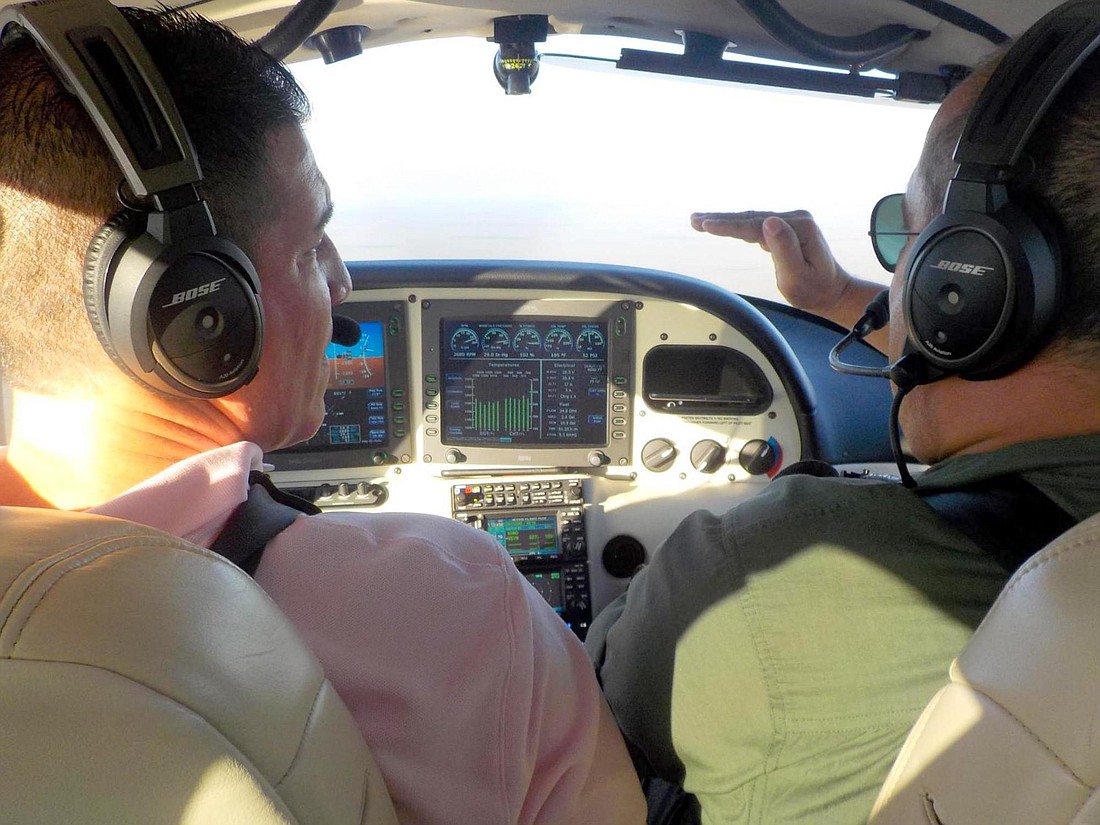- February 23, 2025

The following is a news release from the Flagler County communications office:
Local pilot Galin Hernandez made a bucket-list flight when he along with his wife and two others flew from the United States into Cuba over Labor Day weekend.
It was the first time a general aviation flight from the U.S. was allowed to land in Cuba, something that would have been impossible before this year.
“When President (Barack) Obama met with Cuban President Raul Castro on April 11, we knew the possibility had become a reality,” Hernandez said. “My friend (and fellow pilot) Anthony Perea began researching and planning our flight to Havana.”
Hernandez, who lives in St. Augustine, is a tenant at the Flagler County Airport. While he was the “pilot in command” for the flight because he is Instrument Flight Rules certified, it was Perea’s Cirrus SR20, four-passenger plane that made the 50-minute flight from Key West to Havana.
Hernandez has been rebuilding his own plane, also a four-seater affectionately known as “Blanquita.” He has logged about 165,000 miles on her including destinations in Mexico, Honduras, Guatemala, Belize, Nicaragua, Costa Rica, Panama, the Bahamas, Turks and Caicos, Dominican Republic, Haiti, Puerto Rico, St. Maarten, St. Croix, St. Thomas, Tortola, Nevis, St. Kitts, St. Eustatius, El Salvador and through Cuban airspace – never landing.
“Even with all of his experience, it takes a little courage to be one of the first private pilots to fly into Cuba in many, many years, and to do it without knowing what you are getting into,” said Flagler County Airport Director Roy Sieger. “The story is very fascinating.”
Hernandez, his wife Millie Santiago, and Perea are originally from Puerto Rico. Their friend Giovanni Ferrer is Cuban-American and still has family in Cuba.
“He is the first Cuban to ever show up in a private plane,” Hernandez said.
While Americans are not permitted to travel to Cuba as “tourists,” there are 12 exemptions that are permitted.
Ferrer entered the country to visit family, while the other three made a religious excursion to Havana to visit centuries-old cathedrals in the city.
“I planned a detailed itinerary of the religious activities we would engage in, and we documented everything while we there. Millie took thousands of pictures,” Hernandez said. “There are a number of old churches in Havana, some built in the 1500s. And everything is frozen in time there, because of the way the communists shut it all down.”
While most of the cars are vintage 40s and 50s American models, Cubans now enjoy modern conveniences like the Internet.
“But they don’t get it at their houses,” Hernandez said. “You buy a card for $2 or $3 and it gets you an hour at a Wi-Fi hotspot. You can tell where a hotspot is, because there will be 50 people crowded all around it. And they can Skype. Imagine talking to someone whose face you haven’t seen in 30 or 40 years. You’ll see people with tears in their eyes.”
The trip was largely uneventful, until it came time to leave. Their lack of boarding passes proved problematic.
“They (immigration agents) didn’t know what to do with us, because a boarding pass is required to get through the secured part of the airport,” Hernandez said.
It took some convincing, but they finally convinced Cuban officials to accept their General Declaration page in lieu of boarding passes.
“Anthony and I got fuel. Millie and Gio got situated on the plane,” Hernandez said. “Eventually, we are all strapped and ready to go and two men stopped us because we did not have boarding passes. The head supervisor showed up, looked at the airplane with us strapped in and decided it was OK for us to depart.”
They were finally cleared for takeoff and made their way back to the United States on Labor Day.
“I have wanted to go to Cuba since I was little,” Hernandez said. “It was a great trip. I’d like to make it again one day, but with my own plane.”